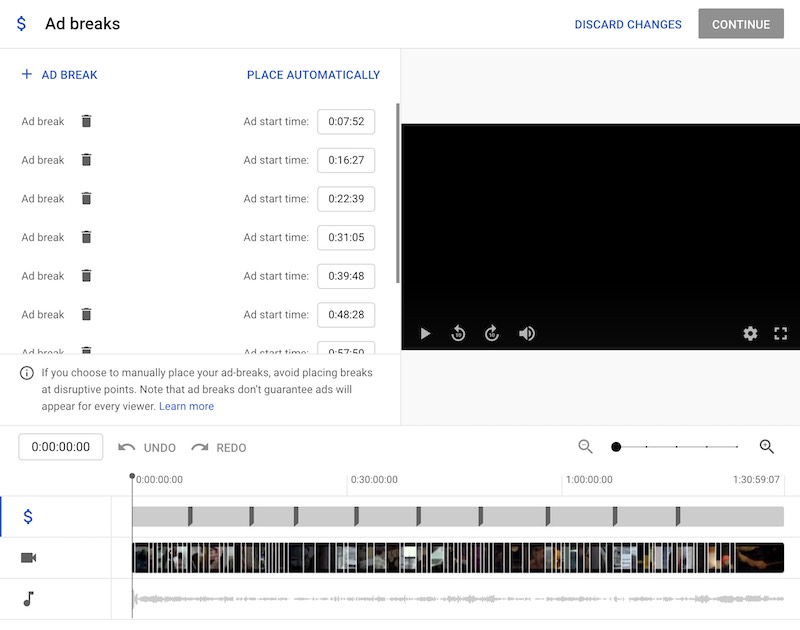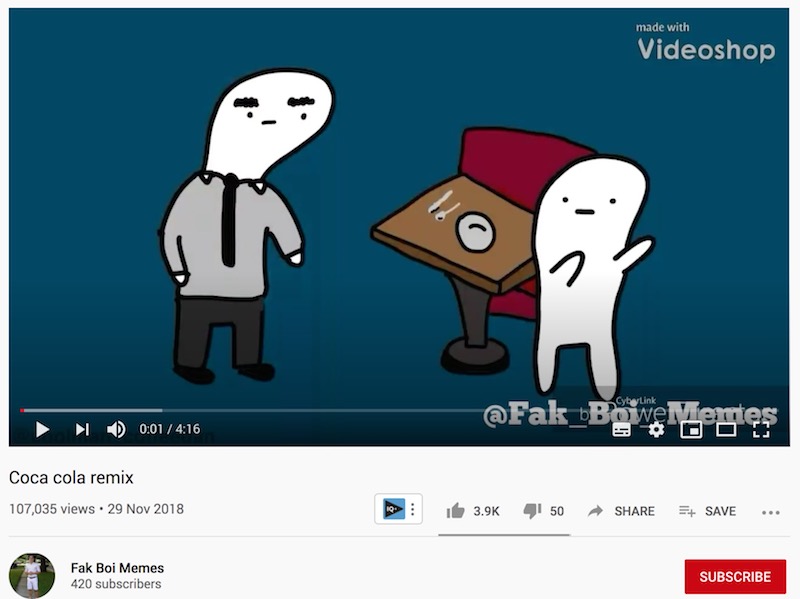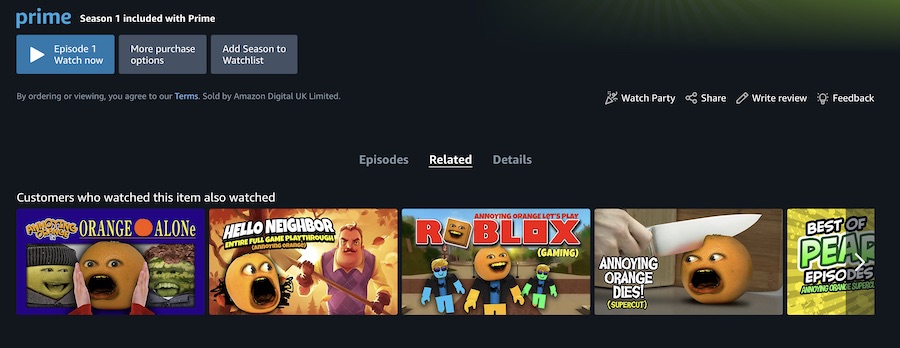So you want to make more money on YouTube…
Don’t we all?
When you think about ways you could increase your YouTube revenue, you might think the most productive strategy is to create and upload more videos. Seems logical, right?
Sure, but there’s one catch: For a lot of us, creating more videos just isn’t realistic. We’re already operating at full capacity, and, well, getting a decent night of sleep is always nice.
But here’s the thing: You can increase your YouTube channel income — even multiply it — without creating a single new video. (And, no, I’m not going to tell you to start selling T-shirts.)Resources Mentioned In This Episode
- Find out more and get the replays of Vidsummit
- Start monetising with content ID by using Superbam
- Hear more about Content ID in Episode 10
- Check out our episode with Real Men Real Style founder Antonio Centeno
- Find out more about foreign Language channels with Papercup
The YouTube easter egg from the start of today's episode is this little gem.
The Pro Channel Manager Academy is our incredible community full of incredible video courses and some of YouTube greatest minds to help you grow the YouTube channels you are working on.
A HUMUNGOUS thank you to our incredible sponsor and my favourite YouTube tool vidIQ. I use it on every single video I upload and has helped me generate BILLIONS of YouTube views. Get a free trial of one of their incredible paid plans by clicking here.
Without a whole lot of extra effort or risk, use these four strategies to make more money on YouTube.
1) Optimize Your YouTube AdSense Settings
If you’ve been following along, this might sound a bit familiar. That’s because I’ve already covered all things YouTube AdSense, but here’s a quick recap of the big hitters that can help you unlock additional YouTube income:





If you want to dive deeper into the world of YouTube AdSense, you can check out my masterclass, which lives inside the Pro Channel Manager Community. Be sure to use promo code PODCAST for a nice little discount. You’re welcome.
2) Use Copyright Claims To Generate Revenue
So I just mentioned copyright claims. They’re annoying if you’re on the receiving end of them, but, chances are, there are people out there using your original content, too.
That means you can use Content ID to generate more YouTube revenue for yourself by allowing users to rip, reupload and remix your content. You can then serve ads to those videos, and cha-ching: You’ve got passive income.
Now, here’s the catch: Not everyone has access to Content ID. You’ve got to be a big media company or major celeb to access this tool. However, there is a workaround. You can work with a third-party specialist like SuperBam. They’ll basically handle everything for you, so you can just sit back and pocket more money.

How much money are we talkin’ exactly? It really depends, but I’ve worked with companies where Content ID revenue actually exceeds the revenue they’re generating on their owned-and-operated channels, so you might be surprised.
If you want to learn a little more about the ins and outs of Content ID, I chatted with Rian Bosak, the founder and CEO of SuperBam, and he gave me the inside scoop.
3) Create Foreign Language Channels
Have you ever thought about cloning your YouTube channel in a different language? Let’s say you’re catering to English speakers. What if you made another version of your channel en Español?
But I don’t know another language, you’re thinking. That’s the brilliant part about this: You don’t have to. There are other people that will do it for you.
Yes, this can be some work, but once you get this set up, it’s a fairly passive way to make more money on YouTube. Plus, there are agencies out there that’ll do the heavy lifting for you.
Take, for example, my pal Antonio Centeno, the owner of the YouTube channel Real Men Real Style. (You can check out an interview I did with him here.)
He has a Russian version of his channel. It has hundreds of thousands of subscribers, and it’s making him a good chunk of change each month. He uses a Russian company that handles everything for him — the translation, reversioning, voiceovers, etc. He literally doesn’t have to lift a finger and just shares some of the income with the agency he works with.

There are a ton of companies out there that do this. Papercup is another example. It harnesses the power of AI to do translations and voiceovers. (Make sure you’re subscribed to my podcast because I’ll be interviewing Papercup’s CEO soon!)
4) Distribute To Platforms Other Than YouTube
Gasp. Yes, I’m saying it: YouTube isn’t the be-all and end-all. Now, to be totally transparent here, sharing your videos outside of YouTube can be challenging. There are a few moving parts, but if you can pull it off, this can be a super profitable way to make money from your YouTube videos without creating new content.
Basically, what you’ll do is take your videos and make “clean” versions of them, getting rid of any YouTube branding or calls to actions. Then you can publish them on other platforms like Facebook, IGTV, Amazon Prime Video, Tubi or XUMO. There are literally dozens of options out there.
This process really isn’t that different from publishing to YouTube. As you collect views, you’ll get paid a share of the ad or subscription revenue, depending on the platform’s revenue model.
Before you start this project, I suggest studying up on each platform to understand the required specs and type of content they’ll accept. If you want to learn more about this tactic, I’ve talked about it before on my other podcast Video Insiders. Find that episode here.

 Bonus Tip
Bonus Tip
If you listened to the podcast episode, you’re been waiting on this bonus tip so here you are:
Turn your YouTube videos into podcast episodes. What you’ll do is rip the audio from your YouTube videos and release them as podcast episodes and monetize them that way.
There are many YouTube niche's where the video is just supplementary to the audio anyway and removing it does nothing to hurt the experience. Think of interview shows for example.
Of course this won't work for every niche but may work for yours and there are PLENTY of ways to monetise a podcast (but we'll leave that to the podcast experts to explain)
Again, this is all about leveraging the content you’ve already created and boosting your YouTube income. It is possible — without losing a good night of sleep… or selling T-shirts.
Never miss a single episode of the podcast and be the first to hear about our new courses and community updates by signing up for updates

